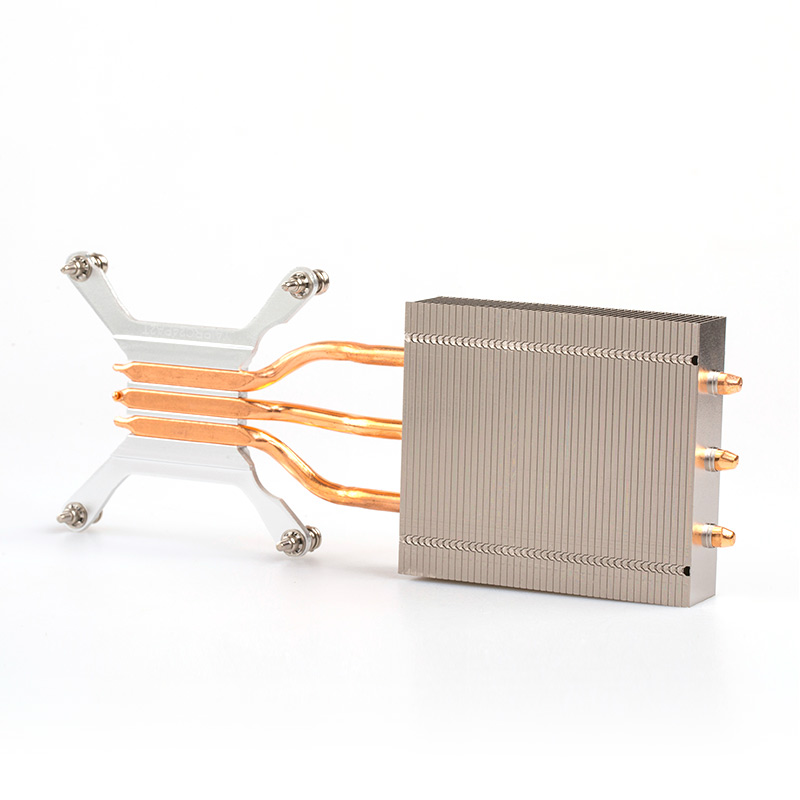

Views: 54 Author: Site Editor Publish Time: 2025-02-28 Origin: Site
Q: How do I check if a CPU cooler is compatible with my system?
A: To ensure CPU cooler compatibility, verify the socket type (e.g., Intel LGA 1700 or AMD AM5), measure physical dimensions against your case and motherboard, match the TDP rating to your CPU’s thermal needs, and confirm clearance for RAM and other components. Reputable CPU cooler manufacturers like Noctua and be quiet! provide detailed compatibility lists for seamless integration.
Choosing the right CPU Heatsink or liquid cooling solution is critical to avoid overheating, noise issues, or hardware damage. Whether you’re upgrading an existing build or assembling a new PC, this guide will resolve common compatibility concerns and provide actionable steps to select a cooling system that fits your needs.

The socket type determines how a CPU cooler physically mounts to the motherboard. Major platforms include:
Brand | Current Sockets | Legacy Sockets |
Intel | LGA 1700, LGA 1200 | LGA 1151, LGA 2066 |
AMD | AM5, AM4 | TR4, sTRX4 |
**Steps to Verify:**
Use tools like CPU-Z or check your CPU’s product page.
Cross-reference the socket support list provided by the CPU cooler factory (e.g., Noctua’s compatibility center).
A CPU Heatsink must fit within your case’s height limits and avoid conflicts with other components.
**Critical Measurements:**
Component | Typical Range |
Air Cooler Height | 120mm–165mm |
Liquid Cooler Radiator | 120mm, 240mm, 360mm |
RAM Clearance | ≤35mm (for low-profile) |
**Pro Tips:**
Consult your case manual for max cooler height and radiator support.
For small form factor (SFF) builds, prioritize compact designs from CPU cooler manufacturers like Noctua NH-L9 or Cooler Master MasterAir.
The CPU cooler must handle your processor’s heat output. Exceeding the cooler’s TDP rating risks thermal throttling.
**Example TDP Requirements:**
CPU Model | TDP | Recommended Cooler TDP |
Intel Core i5-13600K | 125W | 150W+ |
AMD Ryzen 9 7950X | 170W | 200W+ |
Note: High-TDP coolers from CPU cooler factories like be quiet! Dark Rock Pro 4 or Corsair H150i are ideal for overclocking.
Large air coolers may block RAM slots or VRM heatsinks.
**Solutions:**
Opt for offset designs (e.g., Thermalright Peerless Assassin).
Use low-profile RAM (e.g., Corsair Vengeance LPX).
Run CPU-Z to detect your CPU model and socket.
Check the CPU cooler manufacturer’s website for socket compatibility.
Refer to the case specs for max cooler height and radiator mounts.
For custom builds, use calipers to measure manually.
Compare your CPU’s TDP with the cooler’s rated TDP. Add a 20–30% buffer for overclocking.
Mock-install the cooler to check for conflicts with RAM or PCIe slots.
PCPartPicker: Automatically flags conflicts.
Noctua Compatibility Center: Detailed socket and case checks.
Always review the motherboard QVL (Qualified Vendor List) and CPU cooler factory support pages.
Reddit’s r/buildapc and forums like Overclock.net offer real-world build examples.
While liquid coolers (AIOs) avoid RAM clearance issues, they require specific radiator mounts.
Some CPU cooler manufacturers offer free AM5 upgrade kits (e.g., Noctua). Always verify!
Shift the fan upward.
Use a smaller cooler (e.g., Scythe Fuma 2).
Use Case | Recommended Cooler Type | Example Models |
Budget Build | Single-Tower Air Cooler | DeepCool AK400 |
Overclocking | Dual-Tower/Dual-Radiator Liquid | Arctic Liquid Freezer II 360 |
Mini-ITX | Low-Profile Air or 120mm AIO | Noctua NH-L12S |
Silent Operation | Passive/Quiet Air Coolers | be quiet! Shadow Rock TF 2 |
Socket Match: Confirm cooler supports your CPU socket.
Case Fit: Verify height/radiator compatibility.
TDP Rating: Ensure cooler meets or exceeds CPU TDP.
Physical Conflicts: Check RAM, PCIe, and VRM clearances.
By partnering with reputable CPU cooler manufacturers and leveraging tools like PCPartPicker, you’ll avoid costly mistakes. Always double-check specs—your CPU’s health depends on it!